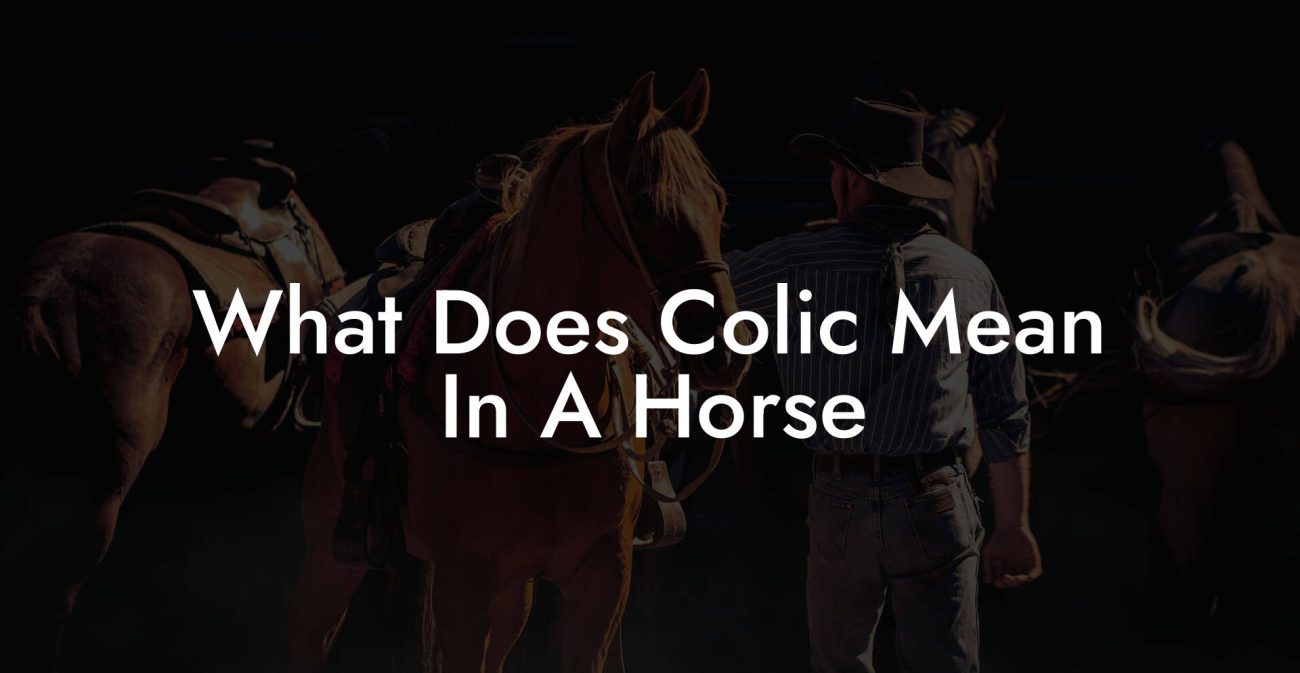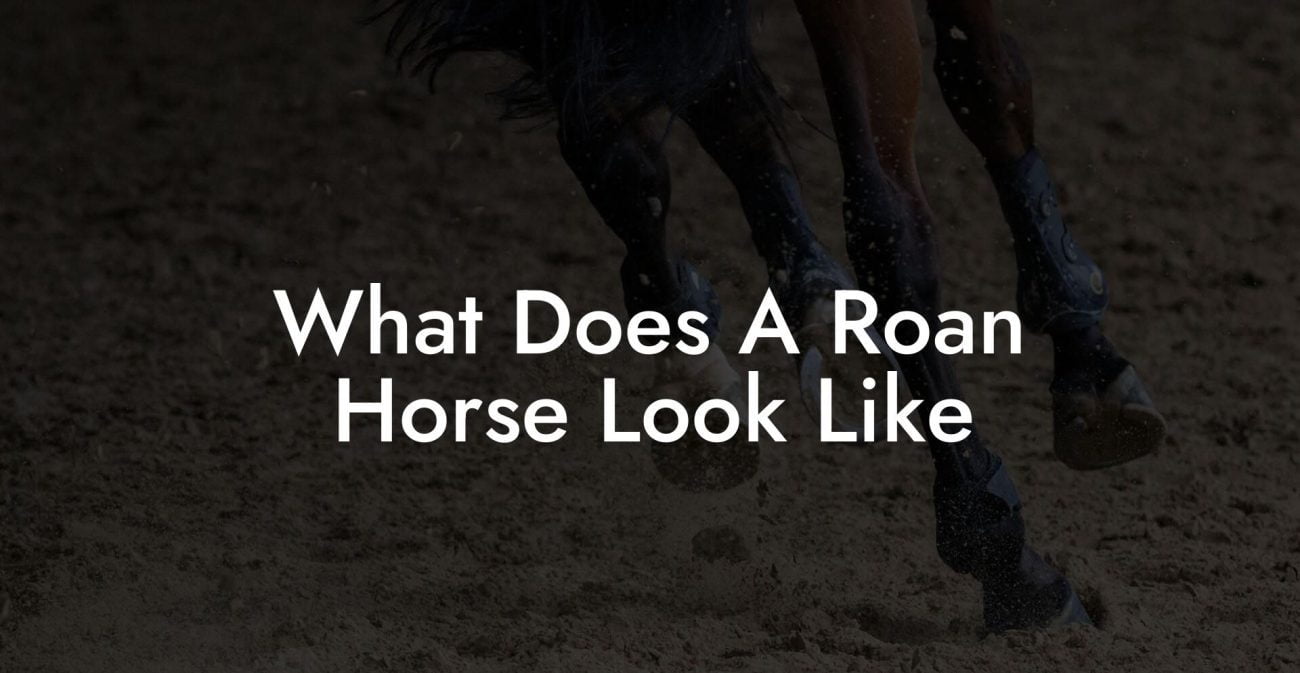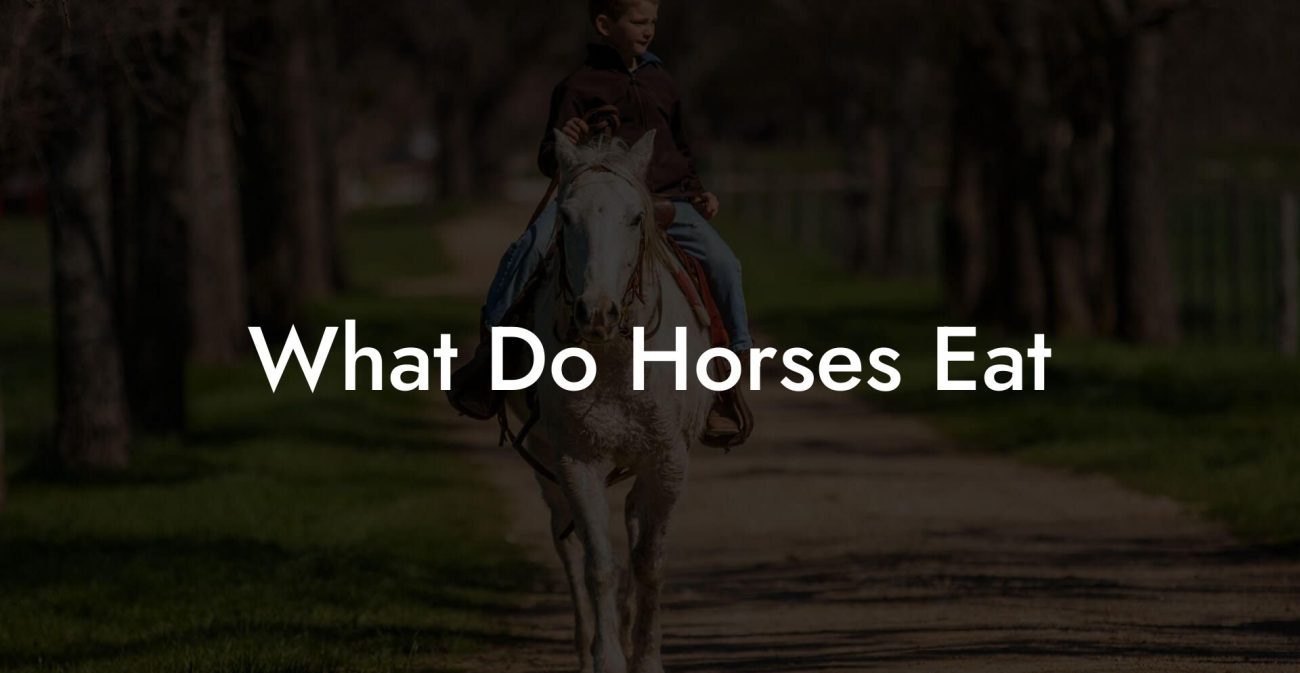Saddle up and get ready to gallop through the world of equine aesthetics, where horse coat colors aren’t just a splash of paint on four legs but a vibrant canvas that tells a tale of genetics, history, and downright quirky charm. If you’ve ever wondered, “What is the most common horse color?” and found yourself picture-galling a field of dapple gray steeds, you’re in for a wild ride that mixes science, care tips, and a dash of equestrian humor to keep your mane shiny and your spirits high.
Quick Links to Useful Sections
- Unraveling the Colorful World of Horses
- Understanding Horse Coat Colors: A Kaleidoscope of Genetics and Beauty
- The Genetic Trail: Why Bay Horses Reign Supreme
- Caring for a Bay (and Other Color) Beauty: Equine Health Tips
- Grooming Secrets: Showcase Your Horse's Radiant Coat
- How Diet Shapes the Shine: Feeding Your Horse for a Fabulous Coat
- Seasonal Changes and Coat Care: Keeping Up with Nature’s Rhythm
- Modern Horse Care: Integrating Technology and Traditional Practices
- Enhancing Equine Performance: How Coat Health Reflects Overall Well-Being
- Beyond Bay: Exploring Other Popular Horse Colors and Their Unique Needs
- Chestnut Wonders
- Graceful Grays
- Bold Blacks
- Caring for Your Equine Companion: Lifestyle Tips for Modern Horse Owners
- Resources and Community Support: Your Next Steps
- Frequently Asked Questions About Horse Color and Care
- Your Next Steps Toward Equine Mastery and Radiant Horse Care
Unraveling the Colorful World of Horses
Horses have been adorning our collective imagination for centuries, prancing through mythology, ranches, and viral TikTok videos alike. Their coat colors are more than mere aesthetics, they’re a symphony of genes, evolution, and a sprinkle of randomness that keeps breeders and horse enthusiasts buzzing with excitement. From the fiery chestnut to the sleek black and the ever-popular bay, each coat color has its own story and science behind it.
For Gen-Z and millennial equestrians, understanding horse coat colors isn’t just academic, it’s central to caring for your equine friend. Whether you're snapping Insta-worthy photos of your horse’s glossy mane or ensuring their coat is as healthy as your streaming marathon spirit, this guide has the lowdown on what colors pop, what those hues mean genetically, and how to keep your four-legged pal in mint condition.
Understanding Horse Coat Colors: A Kaleidoscope of Genetics and Beauty
Every horse is a masterpiece painted by nature’s brush. The spectrum of horse colors is driven by genetics, where dominant and recessive genes mix and match to create a variety of hues. The most common horse color, as studies and breed registries indicate, is the bay. But what exactly makes bay horses so ubiquitous among our equine companions?
Bay horses sport a rich brown body with a black mane and tail, a look that seems to have been designed to complement a sunny day at the arena or a spirited gallop across the paddock. The genetic basis for the bay coat involves the presence of certain alleles that prompt the deposition of black pigment in the mane, tail, and lower legs while leaving the body a uniform shade of brown. It’s a perfect blend of style and function, making bay horses not only common but also exceedingly popular among riders and breeders alike.
But the bay is just one of the many hues filling the equestrian color wheel. Let’s take a quick tour through the palette:
- Chestnut: A warm, reddish-brown coat that exudes rustic charm. Chestnutes are known for their bright, fiery color that can sometimes seem to glow in the sunlight.
- Black: Sleek, elegant, and sometimes mysterious. Black horses can appear almost mystical under the right lighting, absorbing every bit of sunshine.
- Gray: These horses start out with a darker coat which gradually lightens as they age. The slow transformation from dark to light is almost as mesmerizing as watching an Instagram time-lapse video.
- Pinto and Appaloosa: For those who love patterns, these horses offer a mosaic of spots and patches that are as unique as your favorite sneaker drop.
Each of these colors has a distinct genetic blueprint, but when it comes to sheer numbers, bay horses continue to dominate the stables of the world.
The Genetic Trail: Why Bay Horses Reign Supreme
So, what gives bay horses the upper hoof in the genetic race? It all starts with the agouti gene, which plays a critical role in determining where black pigment is deposited. In bay horses, the agouti gene restricts black pigment to the mane, tail, and lower legs, leaving the rest of the coat brown. This combination makes the bay coat incredibly common because it strikes a balance between two color extremes.
The science behind coat color is fascinating for anyone interested in equine biology. Breeders use this genetic knowledge not only to produce horses that meet aesthetic and breed standards but also to ensure that the health and performance of the horses are prioritized. Genetic testing, selective breeding, and knowledge of pedigree all come into play when aiming to produce that evergreen bay coat.
If you’re passionate about both horse care and equine genetics, learning about these gene pathways is like discovering the cheat codes to nature’s most popular equestrian style. It’s genetic artistry, where every allele has a brushstroke in the masterpiece that is your horse.
Caring for a Bay (and Other Color) Beauty: Equine Health Tips
Knowing the most common horse color is only half the battle; proper care is key to keeping any horse looking and feeling fabulous. Horse care isn’t just about routine, it's a lifestyle that echoes the vibrant energy of its owner. Whether you're a trendy millennial riding urban trails or a Gen-Z equestrian exploring horseback adventures in the countryside, these tips will keep your steed in top-notch condition.
Regular grooming: Given that bay horses have that striking mix of brown and black, their coat can sometimes show dust and sweat more than others. Regular grooming not only keeps the coat shiny but also enhances circulation, helping to spread natural oils and keep the skin healthy.
Proper nutrition: A balanced diet is crucial for your horse’s overall health, which directly reflects on its coat. High-quality hay, a mix of grains, and fresh water are the foundations, but don’t skip out on essential supplements. Omega-3 and omega-6 fatty acids play a major role in maintaining coat gloss and skin hydration. Think of it as feeding their Instagram profile!
Regular Health Check-Ups: Routine visits to the vet ensure that your horse not only looks good but feels great. Regular deworming, vaccinations, and dental checks can prevent issues that might otherwise detract from both comfort and appearance.
Exercise and Movement: Horses, like us, need a good dose of exercise to stay in shape. Regular turnout in pastures and structured exercise routines keep muscle tone firm and encourage a healthy coat by stimulating proper blood flow.
By integrating these care tips into your equine management routine, you ensure that whether your horse is bay, chestnut, gray, or any other stunning color, its health and beauty are always in sync with modern, holistic care practices.
Grooming Secrets: Showcase Your Horse's Radiant Coat
Grooming a horse is much more than a chore, it’s almost like a spa day for your four-legged friend. And let’s be honest, who doesn’t love a good spa day? The process of grooming not only keeps your horse’s coat free from dirt and tangles but also establishes a routine that enhances your bond.
Tools of the Trade: Ensure that you have a reliable set of grooming tools: brushes of various textures, a slicker brush, a curry comb, and a mane comb are essentials. A soft grooming brush will remove any loose hair and dust without damaging the natural oils that keep the coat shiny.
Shampoo and Condition: While horses have a natural defense against the elements, a periodic wash can help maintain their luster. Choose a shampoo that is specifically formulated for equine skin, ideally enriched with conditioners and moisturizers. After a good wash, don’t forget to condition the mane and tail to keep them silky smooth, just picture that Insta story glowing with your horse’s natural shine.
Massage and Health Check: While grooming, give your horse a gentle massage to promote blood circulation. This small ritual not only cements your relationship but also provides a perfect opportunity to check for any lumps, bumps, or injuries that might need further attention.
Remember, a well-groomed horse makes for a positive first impression and a happy, healthy companion. Whether you’re preparing for a competition, a casual ride, or a social media photoshoot, a regular grooming routine will always keep your equine superstar in the spotlight.
How Diet Shapes the Shine: Feeding Your Horse for a Fabulous Coat
Ever wondered why horses with a healthy diet seem to have an extra sparkle in their coat? Much like how you might opt for a kale smoothie to keep your skin glowing, the right nutrition works wonders for your horse’s coat. Their diet, when carefully balanced, can be a major contributing factor to maintaining that lustrous bay shine or any other color healthily.
Key Nutrients for Coat Health: A diet rich in:
- Essential Fatty Acids: Omega-3 and omega-6 fatty acids are the secret behind a shiny, robust coat. They help reduce inflammation and keep the skin supple.
- Vitamins and Minerals: Vitamins A, E, and biotin are essential components that not only support coat growth but also provide a barrier against environmental stressors. Minerals like zinc and copper contribute to pigment formation and skin repair.
- Proteins: Adequate protein levels ensure that muscle repair and overall body health continue unabated. High-quality feeds containing alfalfa, soybean meal, or other protein sources are crucial for robust muscle and coat health.
Hydration is Key: Just as you wouldn’t skip water during a marathon, your horse needs ample hydration to maintain a glossy coat. Clean, fresh water should always be accessible, and in hotter months, consider adding electrolyte supplements to help your horse stay refreshed.
Supplement Wisely: In some cases, a targeted supplement regimen can improve coat condition significantly. Always consult with an equine nutritionist or your veterinarian before introducing new supplements to ensure they complement your horse’s unique dietary needs.
By fine-tuning your horse’s diet, you’re not just feeding them, you’re investing in their overall well-being, making sure they look as fabulous as they feel.
Seasonal Changes and Coat Care: Keeping Up with Nature’s Rhythm
Horse coats are living, breathing reflections of the seasons, dynamically changing to adapt to the environment’s rhythmic cues. From the lush, glossy summer coat to the thicker, insulating winter mane, understanding these changes is crucial for modern horse care.
Spring and Summer: As temps climb, your horse’s coat may naturally shed and thin out for cooling. Regular grooming during these months is key to controlling shedding and removing dust and allergens that can irritate the skin. Consider a deep-conditioning treatment mid-summer to repair any damage from sun exposure.
Fall and Winter: During colder months, expect a fuller, fluffier coat that acts as a natural insulator. While this thick coat is great for warmth, it’s still important to remove excess hair and debris to prevent skin irritations or matting. This is also the time to ensure that your horse’s diet has that extra dose of nutrients to support its energy needs.
Seasonal changes also mean adapting your grooming and care routines accordingly. A proactive approach to coat care ensures that your horse remains comfortable, healthy, and looking picture-perfect, no matter the weather.
Modern Horse Care: Integrating Technology and Traditional Practices
In today’s fast-paced world, caring for your horse often means blending the tried-and-true traditional methods with the latest technological advancements. For those of us who live by our smartphones and social media feeds, this marriage of old school and new cool is essential to staying ahead in the horse care game.
Wearable Tech for Equine Wellness: Devices that monitor a horse’s activity levels, heart rate, and even sleep patterns can offer insights into overall health. These smart devices help you track exercise routines and adjust care plans based on real-time data, a must-have for any modern equine enthusiast.
Mobile Apps and Digital Health Records: Gone are the days of scribbling notes on clipboards. With digital health records and mobile apps designed for horse management, scheduling vet appointments, logging feeding times, and even tracking grooming sessions have become easier, more organized, and instantly accessible.
Online Communities and Virtual Support: The internet offers endless support through online forums, social media groups, and dedicated equine care websites. These platforms allow you to share experiences, seek advice on tricky coat care issues, and even swap stories about your favorite bay beauties.
Whether you’re a tech-savvy Gen-Z equestrian or a millennial blending tradition with innovation, embracing technology can elevate your horse care routine, ensuring your equine partner is always in the best health and style.
Enhancing Equine Performance: How Coat Health Reflects Overall Well-Being
A glossy coat is more than just an aesthetic win, it’s a visible marker of a horse’s overall health. When your horse’s coat is vibrant and well-maintained, it’s often a sign that their diet, exercise, and overall care are on track. In the realm of equine sports and leisure riding, performance and presentation are closely intertwined.
Performance and Grooming: Many competitive equestrians know that skin and coat health can indicate workout recovery status. Just like athletes monitoring their nutrition and rest, your horse’s coat can reveal whether its body is thriving or if a tweak in management is needed.
Stress and Coat Condition: Horses, too, are affected by stress. A stressed horse can sometimes show signs like a dull, patchy coat. Incorporating regular relaxation techniques, social interaction with herd mates, and ensuring your horse has ample downtime can help keep that coat lustrous.
Case in Point: Many trainers report that horses receiving balanced nutrition and periodic grooming sessions often perform better both in competitions and in daily routines. A healthy, well-cared-for coat is part of a larger picture of holistic equine well-being.
Paying close attention to your horse’s appearance not only makes for stunning photos but serves as a constant reminder that every aspect of care, from the stable to the riding arena, affects overall performance.
Beyond Bay: Exploring Other Popular Horse Colors and Their Unique Needs
While bay horses have earned the crown as the most common and widely loved color, equine enthusiasts know that every coat color has its intricacies and special care requirements. Let’s gallop through some of the crowd favorites:
Chestnut Wonders
Chestnut horses offer a warm, reddish-brown hue that can vary from a deep mahogany to a lighter, almost coppery tint. They often require a bit more maintenance during the summer months to prevent sunburn and ensure that their rich color doesn’t fade.
Graceful Grays
Often beginning life with a darker coat that gradually lightens with age, gray horses present their own challenges. Their transforming coat can sometimes be accompanied by patchy, uneven textures. Special grooming techniques and moisturizing treatments can help even out the look.
Bold Blacks
Black horses, with their sleek and dramatic appearance, require consistent grooming to highlight their natural shine. They can sometimes be more sensitive to heat absorption during sunny days, so proper shelter and cooling practices are essential.
Each color type might call for minor adjustments in care routine, but the fundamentals of nutrition, grooming, and overall health remain universal. Embracing diversity in horse coat colors enriches the equine community, ensuring that no horse is left without the best care.
Caring for Your Equine Companion: Lifestyle Tips for Modern Horse Owners
In today’s world, the lifestyle of a horse owner is as dynamic and varied as the coat colors of the horses themselves. Combining modern trends with traditional values, equine care has evolved to be more holistic, sustainable, and yes, totally Instagrammable.
Structured Daily Routines: Establish a routine that includes exercise, grooming, nutrition, and downtime for your horse. A consistent schedule not only helps the animal adjust but also reduces anxiety and stress, ultimately reflecting in a healthier coat.
Community Engagement: Joining local and online horse clubs can expose you to new techniques, share resources, and even partner up for riding events. Think of it as a blend of Reddit threads and real-life barn gatherings, a network that supports both horse and owner.
Sustainable Practices: Modern horse care also means being environmentally conscious. Look for eco-friendly grooming products, sustainable feed options, and even consider energy-efficient stable management practices. This way, you’re not only caring for your horse but also the planet.
Balancing Work and Play: Many modern horse owners work remotely or have flexible schedules. Leverage technology to schedule regular check-ups and ensure that your horse gets enough playtime and exercise. After all, a happy horse leads to a happy owner!
Integrating these lifestyle tips into your daily routine fosters an environment where your horse not only thrives physically but also enjoys a higher quality of life, full of routine, care, and fun.
Resources and Community Support: Your Next Steps
Equine care, especially when you’re seeking to nurture a gorgeous, healthy coat, is a journey best supported by a vibrant community. From online forums and social media groups to local equestrian clubs and veterinary networks, the resources available today can help you take your horse care routine to the next level.
Join Online Platforms: Follow hashtags like #EquineCare, #HorseGrooming, and #BayBeauty on Instagram and TikTok. These platforms host lively communities of horse enthusiasts sharing tips, tutorials, and success stories.
Local Riding Clubs and Events: Participate in clinics, local riding events, and horse shows. Engaging with fellow horse owners and experts in person can offer real-time advice and create bonds that turn routine horse care into a delightful social experience.
Consult Experts: Regular consultations with veterinarians, equine nutritionists, and professional groomers are invaluable. They not only guide you through the science and art of horse care but also tailor recommendations to meet the unique needs of your horse, whether it’s a common bay or a uniquely patterned wonder.
Digital Libraries and Blogs: The internet is overflowing with in-depth guides, research papers, and blog posts on horse care. Bookmark reputable sources and sign up for newsletters to stay updated on the latest in equine health, genetics, and grooming.
Taking advantage of these resources will empower you to revolutionize your horse care practices, ensuring that your equine companion remains healthy, happy, and always picture-ready.
Frequently Asked Questions About Horse Color and Care
Curious minds often have questions about the ins and outs of horse coat colors, care techniques, and the science behind these magnificent creatures. Dive into these FAQs for swift, informative answers!
1. What is the most common horse color?
Bay is widely recognized as the most common horse color, characterized by a rich brown coat with black mane, tail, and lower legs, thanks to the unique interaction of specific genes.
2. Why are bay horses so popular among breeders?
Bay horses are not only striking in appearance, but the genetic traits behind their coat make them reliable and relatively easy to breed. Their uniformity in color provides both aesthetic appeal and consistency for competitive standards.
3. How do genetics influence a horse's coat color?
The horse coat color is determined by multiple genes, including the agouti gene which restricts the black pigment to specific areas. These genes interact in complex ways, resulting in a spectrum of coat colors from bay and chestnut to gray and black.
4. Does a horse’s diet impact its coat condition?
Absolutely. A balanced diet rich in essential fatty acids, vitamins, minerals, and proper hydration plays a crucial role in enhancing coat shine and overall skin health.
5. How often should I groom my horse?
Regular grooming should be part of your daily routine to remove debris, distribute natural oils, and maintain overall coat health. More intensive grooming routines may be required seasonally or before events.
6. Are there digital tools to help track equine health?
Yes, modern wearables and mobile apps allow you to monitor vital signs, activity levels, and even schedule reminders for feeding and grooming, making holistic horse care easier than ever.
7. How can I tell if my horse’s coat is unhealthy?
A dull coat, patchy areas, or signs of flakiness may indicate nutritional deficiencies or underlying health issues. Regular check-ups with a veterinarian can help diagnose and address these concerns early on.
8. Does the most common horse color affect its care requirements?
While bay horses and other colors generally require similar care routines, subtle differences in coat type and color intensity might dictate minor adjustments in grooming or nutritional practices.
9. Can technology improve my horse’s overall well-being?
Definitely. The integration of technology, ranging from digital health records to wearable devices, enhances monitoring, ensuring timely adjustments to training and care routines.
10. Where can I find a supportive equine community?
Online platforms, local riding clubs, and equestrian events provide excellent opportunities to connect with fellow horse lovers who share tips, resources, and inspirational success stories.
Your Next Steps Toward Equine Mastery and Radiant Horse Care
Whether your curiosity about horse coat colors led you here, or you’re simply on a quest to elevate your horse care routine, the journey to equine mastery is paved with passion, knowledge, and a touch of creativity. Remember, every horse, especially our beloved bay beauties, is a unique blend of genetics, culture, and care. With the right balance of high-tech tools, traditional grooming practices, and community support, you can ensure your equine companion not only looks incredible but feels amazing too.
Dive deeper into the world of horse care by exploring local classes, following equine care gurus online, and always staying curious about the science and art that make up this extraordinary field. Your horse’s health and beauty reflect the care you invest, so never stop learning or sharing your journey with the community.
Embrace the modern wave of equine innovation and wellness trends. Turn every grooming session into a celebration of your horse’s natural elegance, and let each shared tip and success story fuel your passion for top-notch horse care. The stable door never closes on opportunities for improvement and inspiration, so get out there and make your mark in the vibrant, ever-evolving world of equine care!
Your next step is simple: keep exploring, learning, and connecting. From trending social media groups to hands-on grooming workshops, the resources and community support out there are waiting to help you take your horse care and knowledge to the next level. So gear up, saddle up, and make every day another chance to celebrate the living art of a well-cared-for horse.













